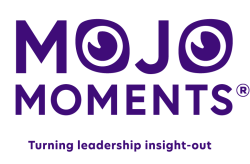You might consider me a member of the correctness police. Your disdain might be justified, for I know my advocacy for certain ideas can come off as over-the-top. I may drive my team nuts, for example, when I ask them to eliminate the term “drive” from their vocabulary. To be fair, I only request it when the term “drive” relates to motivation — or to leadership behaviors meant to motivate people. I remind them they can drive cars, golf balls and cattle, but driving people only drives them crazy.
In my book, Why Motivating People Doesn’t Work, and What Does, a chapter titled “The Danger of Drive” asks leaders to refrain from using the term. I was delighted when the head of a $15 billion wealth management group with over 23,000 employees cleansed internal documents of the word “drive” as part of an initiative to help financial advisors shift from external and imposed motivation to optimal motivation based on values and service. One small step.
But look at most leadership competencies, and you’ll discover managers being held accountable to drive performance, drive results, drive excellence, drive engagement and the list goes on. You may think that when you drive for results, you’re doing your job. Especially if you are being held accountable for getting those results. But driving for results usually leads to applying pressure, relying on rewards or micromanaging — leadership techniques proven ineffective at accomplishing your desired results.
The workplace is rife with leadership practices based on concepts such as Drive Theory — an outdated approach to motivation based on physiological or physical drives, not psychological needs. Unfortunately, our language reflects these obsolete practices. Therein lies the problem. Words connote beliefs — they carry an energetic property. Leaders are constantly using words filled with connotations that undermine their best intentions. It can take decades or longer to purge the language of leadership and incorporate more evolved thinking.
Be proactive in your language
When working with leaders, I urge them to reframe their language proactively. I ask them to be mindful of how their words can generate negative energy that contributes to people feeling unsafe, defensive, guarded, inferior, incompetent or fearful. I recommend, for example, that they avoid controlling language and closed-ended questions that stifle people’s mindfulness and erode optimal motivation.
I think I make a compelling case, but I often notice a few leaders checking out when I provide two different illustrations for communicating a deadline.
- The first version uses controlling language that tends to erode a person’s psychological need for choice, connection and competence:
“Your deadline is next week. You must do whatever it takes and push harder to finish this on time.”
- The second version uses non-controlling language allowing individuals to reach their own conclusions about how to achieve their goal. This statement employs three leadership capacities that promote optimal motivation: encourage choice, deepen connection and build competence:
“Your deadline is next week. If you’re feeling pressure or concerned that you might not make it, let’s explore solutions to help you meet expectations and relieve the source of your tension.”
Instead of embracing the language more likely to generate their desired results, there’s always a handful of leaders who ask: Why should I have to guard every word I utter to protect someone’s precious psychological needs?
- The second version uses non-controlling language allowing individuals to reach their own conclusions about how to achieve their goal. This statement employs three leadership capacities that promote optimal motivation: encourage choice, deepen connection and build competence:
“Your deadline is next week. If you’re feeling pressure or concerned that you might not make it, let’s explore solutions to help you meet expectations and relieve the source of your tension.”
Instead of embracing the language more likely to generate their desired results, there’s always a handful of leaders who ask: Why should I have to guard every word I utter to protect someone’s precious psychological needs?
A rigorous debate ensues with complaints about a workforce of “snowflakes” — a derogatory slang term, implying a generation of employees with an inflated sense of uniqueness and an unwarranted sense of entitlement. Some leaders outright express their lack of tolerance or respect for a workforce they consider overly emotional, easily offended and unable to deal with opposing opinions.
Defending my premise that watching their language is a significant leadership responsibility risks taking the conversation down a complicated path. But I argue that exploring the leader’s role in company culture is a worthwhile discussion.
Consider this: Language defines a culture. The Japanese language includes at least six ways to represent rice, and the Eskimo language has 50 words for snow. Language is a living thing, constantly evolving and reflecting societal changes. For example, in the 1960s, when you thought a person did something stupid, it was common to call them “retarded.” I was offended by the term because my sister, Terri, was born with water on the brain from Spina Bifida. My heart broke when she was old enough to understand the word and regretfully claimed, “I’m retarded.” She was physically and mentally disabled. But there was a massive distinction between the terms used in a medical diagnosis and the judgment that accompanied society’s careless use of the word retarded. Today, thanks to greater awareness and empathy, most people refrain from thoughtlessly calling someone “retarded.”
Use language to reduce workplace toxicity
I know there’s an anti-woke movement that paints such evolutions in our language with a broad stroke — claiming there’s a generation of too-sensitive people acting as the “language police.” Of course, in any societal change, over-zealous advocates can push too far in their righteousness. But struggling with changes in our language reflects a growing awareness of injustice and the too-high price of ignorance.
How does all this play into the words you use as a leader — especially when promoting people’s psychological need for choice, connection and competence? According to recent research from McKinsey, escaping a toxic culture is the second most cited reason people are resigning from their jobs to seek new ones (or staying and quiet quitting instead).
My bottom line message to leaders is: The language of business harbors vestiges of traditional command-and-control leadership and a leader-centric perspective proven inadequate for promoting well-being and workplace effectiveness.
What are you saying when you use terms such as drive and incentivize? What effect do your words have on the people you lead? To develop a culture where people can thrive, begin by taking stock of the words you use. Avoid language and practices reflecting top-down position power and control — and an outdated cultural model. Consider an alternative vocabulary that reflects justice and promotes optimal motivation based on values, a noble purpose and contributing to the greater good.



